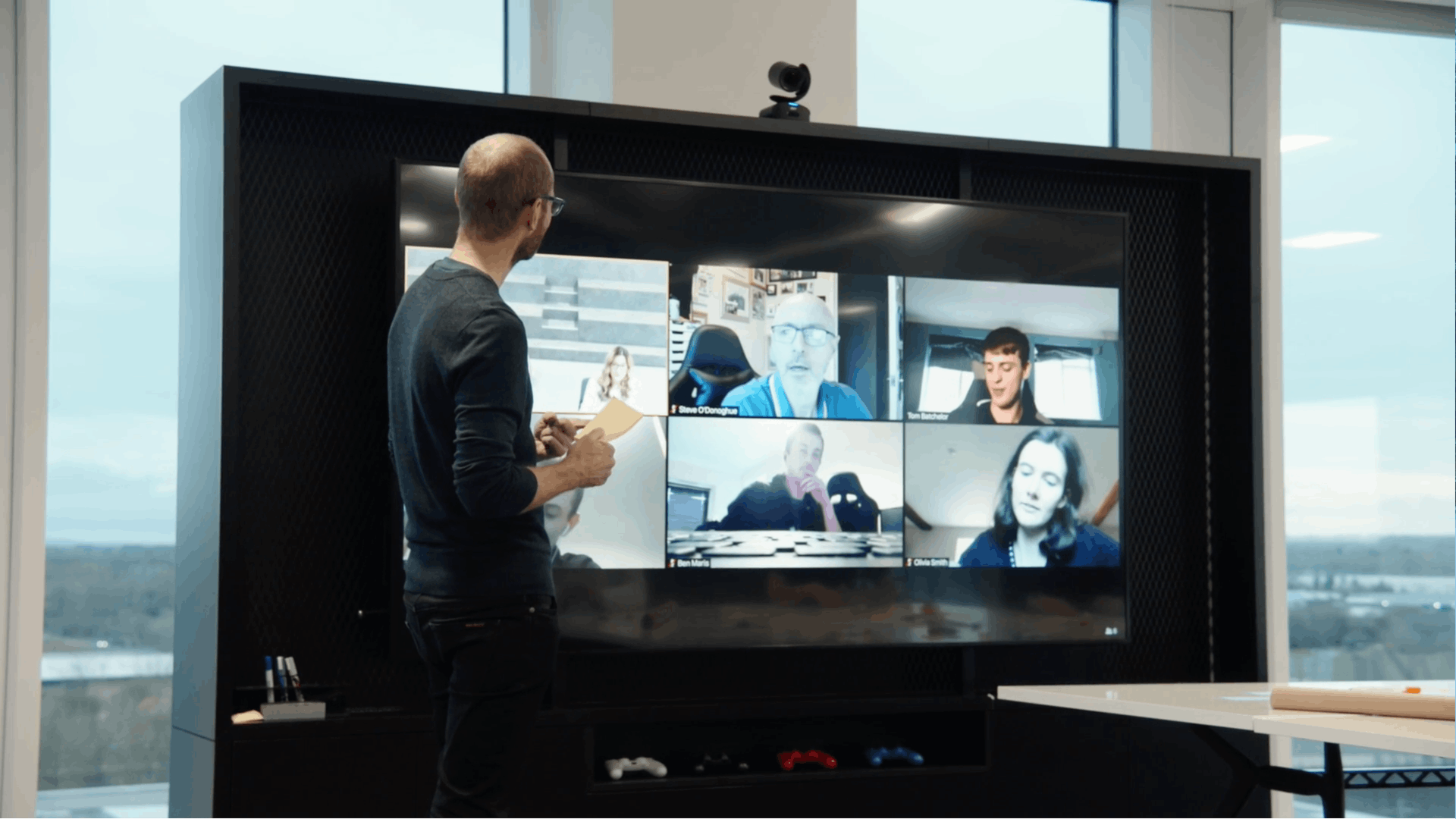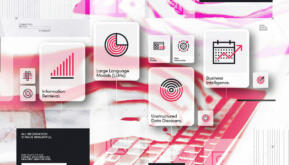Working to Live, Not Living to Work – Embracing the Hybrid Office.

With the future set to be flexible for more workers than ever before, Charlotte Richmond, Head of Employee Engagement & Wellbeing, explores how you can make sure you and your teams get the best out of a hybrid home-based and in-office setup...
When the pandemic struck in March 2020, the majority of the global workforce began working from home almost overnight. This shift presented immediate challenges, from shipping office equipment to employee’s homes to initiating new protocols for collaboration and workflows. Communication, relationships, and culture all had to be adapted for the new work from home (WFH) environment, and technologies like Zoom, Slack, and Teams moved from emerging elements of the workday toolkit to essential components in maintaining output.
Since those early days, procedures have been tweaked and fine-tuned to the point where remote and hybrid working is the new norm. Global networks have handled the increased online traffic, and businesses have put the necessary technology and software solutions in place to facilitate this flexible and streamlined approach. Daily commutes have been replaced with extra family and home time – and a reduced carbon footprint for many. In response to a recent survey carried out by the Chartered Institute of Personnel and Development, called Embedding New Ways of Working Post Pandemic, employers across the UK revealed the proportion of their workforce continuously WFH.
- 35% reported up to a quarter of their workforce
- > 40% reported more than three quarters of their workforce
- 21% reported all of their workforce
Exactly what does this mean for businesses and employees going forward?
Limitations and opportunities – ironing out the kinks
For businesses and individuals, our disparate working environments can hinder the free-flowing collaborations and spontaneous interactions so often forged in the crucible of face-to-face office-based interactions. Not being able to grab a colleague for a quick chat as you pass them in the corridor can sometimes make problem solving more convoluted and time consuming on remote channels. And while the fortunate few have a home environment perfectly conducive to quiet, productive days, others are not so lucky. From cramped spaces in shared houses to the distraction of young children, the home is a zone more attuned to domestic living and rarely designed to accommodate our current work pressures.
Not being able to grab a colleague for a quick chat as you pass them in the corridor can sometimes make problem solving more convoluted.
As this new way of working takes hold, we’ve all come to realise that our homes and offices have their plusses and minuses when it comes to creativity, collaboration, and wellbeing. For some, fewer distractions, new technology, and ditching the costly commute has freed up time to deal with caring responsibilities and improved their ability to focus on work, coordinate workloads, communicate with colleagues, and hit targets. Whereas for others, less-than-ideal homeworking environments and a sprinkling of social interactions has stifled staff collaboration, coordination, and line management, diminished motivation, and aggravated mental wellbeing. But when all’s said and done, the comparative success of homeworking means that a partial return to the workplace is on the cards, with 70 per cent of the employers surveyed reporting plans to expand or introduce WFH on a regular basis (versus 45 per cent pre-pandemic), and the majority of employees favouring a hybrid model.
Evolving the hybrid workplace – a space to suit everyone
Hybrid working is becoming the new standard because it makes sense in so many ways, yet it’s still in its infancy for most. And although many businesses applied a hybrid model in limited capacities pre-pandemic, tomorrow’s hybrid workplace will differ in several ways. First, the number of employees working remotely has increased dramatically. Second, days in the office and days worked remotely are less likely to be scheduled in advance as they were before, improving flexibility. Third, and perhaps most importantly, the ratio of in-office vs remote employees will be fluid, shifting, and evolving in real time.
Our homes and offices have their plusses and minuses when it comes to creativity, collaboration, and wellbeing.
When establishing a hybrid strategy that delivers real benefit, employers need to clearly set out their expectations for the hybrid workplace, and how they can best support their workforce within that framework. Not just a select few, or those who really push for it, but all employees. Everyone needs to be engaged, integrated, and equipped with appropriate workspaces and tools within the office and at home. So how does the office space fit into all this? Will it exist primarily as a collaboration environment, while home acts as an isolated incubator for focused productivity? It’s a conundrum dependent on both personality and role, but the key lies in our flexibility and transparency – who’s going to be where? And when? There’s no point in a team coming into the office to collaborate on a project only to find that the meeting rooms are fully booked and the IT or audiovisual equipment is all in use. Businesses set to reap the biggest rewards from hybrid working will be those that consciously remodel their working practices to facilitate collective creativity and spur-of-the-moment communications regardless of where their employees reside, with flexible workplace design and technology solutions equipping all workers equally to optimise collaboration and productivity on site and at home.

Atypical working practices and reimagined spaces at Aiimi
That said, since Aiimi’s inception back in 2007, and long before ‘hybrid working’ really took shape, we’ve always known and practised the inclusive and beneficial nature of a hybrid model. And it stretches far beyond the implications we’ve considered so far. The mindset at Aiimi has always been to measure our employees on how effectively they use their time, plus the quality level of their overall output, rather than their ability to work a standard 9-5 day or where they choose to carry out that work. It’s a simple system based on outcomes and deliverables. When the pandemic took hold, very few things changed in terms of how our business operated, which was hugely beneficial and reassuring for our team.
Businesses set to reap the biggest rewards from hybrid working will be those that consciously remodel their working practices to facilitate collective creativity.
Due to the richly diverse nature of our existing employees, and new starters instinctively attracted to how we operate, it’s fair to say there’s no standard working practice across our organisation. And yet our business output has never been compromised. Instead, our highly collaborative, inclusive, and enthusiastic teams have all the necessary tools and support readily available to assure their high levels of motivation, production, and wellbeing. This has been instrumental in Aiimi’s growth over these past 18 months, as we’ve almost doubled in size!
At Aiimi, flexible working always has been, and always will be, the norm. It will continue to be so because it works so well. Fundamentally, this simplistic approach assesses what is right for the individual by considering their needs. Policies can stifle this approach and impede inclusivity, so our key consideration remains unchanged. We always start by asking, what’s fundamentally right for this individual to enable them to work to their best potential? And what reasonable adjustments might they need to be put in place? It’s uncomplicated and effective, benefiting both parties. That’s why, at Aiimi, we foster flexible and transparent working practices that are made available to all our employees from day one, rather than on passing probation, building on the strong sense of trust that is so key to our company culture. This dynamic forges an open and responsible working relationship going forward, empowering our employees to work authentically and, even more importantly, flexibly.

We also appreciate that our employees’ homes are unlikely to be perfectly designed to accommodate the pressures of work. That’s why we offer our employees an allowance to equip their at home work zone, alongside a welcoming and collaborative space at our HQ in Milton Keynes. Designed to function as an open and accessible central hub to promote communication and productivity, it features a wide range of working spaces, hubs, meeting rooms, and a Hack Zone, all equipped with connected technology solutions. Combined, these flexible spaces promote free-flowing collaborations and spontaneous interactions between people when they’re in the office, and in tandem with those choosing to work from home.
A flexible future for everyone – as standard
As the hybrid model becomes more embedded in the workplace, companies will continue to reconfigure working policies, procedures, practices, and spaces to accommodate this new way of working. Changes to wider flexible working arrangements like job-sharing, flexible start and end times, or condensed hours may well unfold, and it will be interesting to see whether modifications will be spread out uniformly across all roles and sectors. In the meantime, to help you plan for your hybrid future, here are our six tips towards hybrid excellence:
- Rethink how much space is needed for your hybrid workforce and then create flexible workstation solutions like hot desking to foster collaboration and freedom of movement
- Ensure all working spaces support video conferencing and relevant technology to connect with co-workers in the office and those WFH
- Implement on-premise workflows to ensure everyone can access the equipment and desk space they need when they come into the office
- Ask employees for feedback to ensure your hybrid and WFH models meet everyone’s individual needs
- Maintain high levels of self-motivation and a sense of community with events that can be held in the office and remotely using social channels or apps
- Use workplace analytics solutions, such as the Aiimi Insight Engine, to understand and further optimise hybrid environments
We have unwittingly been handed an opportunity to remake our working lives for the better, creating a more accessible working environment for all, from remote to hybrid. This comes maybe once in a generation. Let’s not blow it.
Looking for a new opportunity at an organisation where flexibility comes as standard? Check out our open roles or chat to the Aiimi Talent team today.
Aiimi Insights, delivered to you.
Discover the latest data and AI insights, opinions, and news from our experts. Subscribe now to get Aiimi Insights delivered direct to your inbox each month.
Aiimi may contact you with other communications if we believe that it is legitimate to do so. You may unsubscribe from these communications at any time. For information about our commitment to protecting your information, please review our Privacy Policy.
Enjoyed this insight? Share the post with your network.
Exploring Europe On My Sabbatical Leave: How Aiimi Valued My Years Of Contribution

The Phil Hancey Squash Fund






